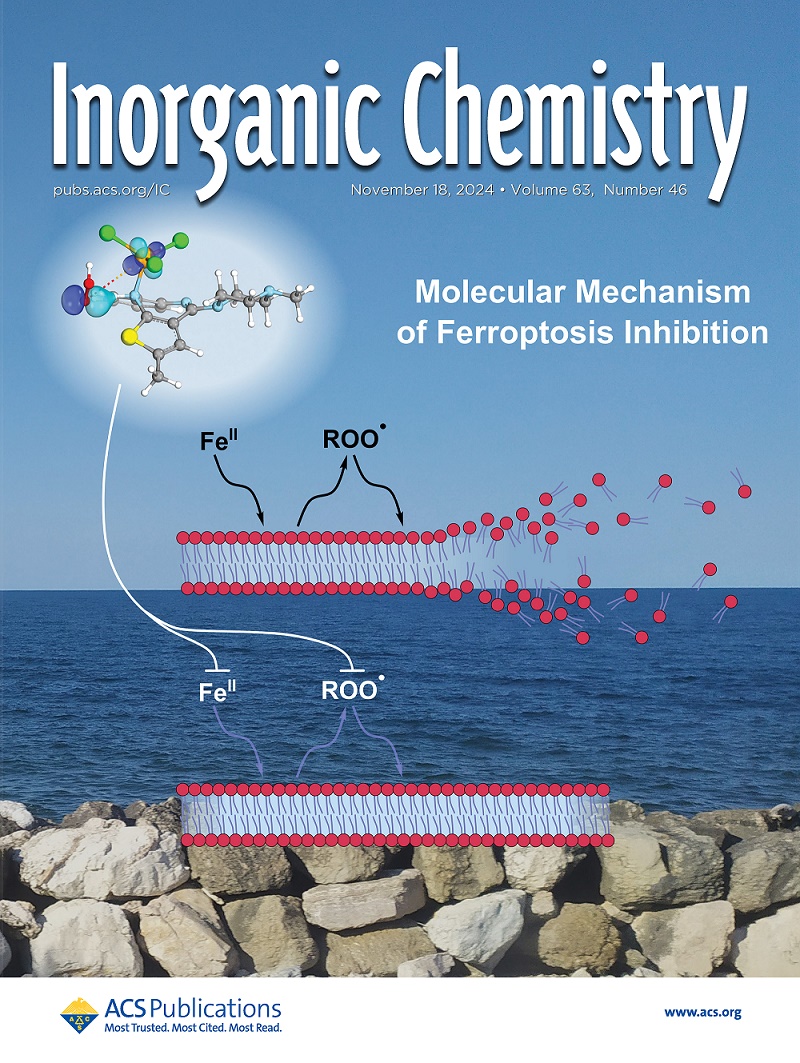Enhanced Photocatalytic O2 Evolution over Layered Perovskite Oxyiodide Ba2Bi3Nb2O11I through Flux Synthesis and Surface Modifications
IF 4.3
2区 化学
Q1 CHEMISTRY, INORGANIC & NUCLEAR
引用次数: 0
Abstract
Sillén–Aurivillius oxyiodides, particularly Ba2Bi3Nb2O11I with double-perovskite layers, are promising photocatalysts for visible-light-driven water splitting due to their excellent light absorption and carrier transport properties. However, efforts to enhance their photocatalytic performance through advancements in synthesis methods or surface modifications remain limited. Here, we report the flux synthesis of Ba2Bi3Nb2O11I and the optimization of cocatalyst loading. Single-phase Ba2Bi3Nb2O11I was successfully synthesized using molten alkali iodide salts under appropriate reaction conditions. The heating rate during the synthesis significantly influenced crystallinity and carrier lifetime, as shown by time-resolved microwave conductivity measurements. By optimizing the reaction conditions to enhance crystallinity (prolong carrier lifetime), the flux-synthesized sample exhibited a higher sacrificial O2 evolution rate than that prepared via the conventional solid-state reaction. Furthermore, precise control over the loading conditions of the iron–ruthenium oxide cocatalyst ((Fe,Ru)Ox) significantly enhanced nonsacrificial O2 evolution from an aqueous Fe3+ solution. Electrochemical analysis revealed that the tuned loading conditions enhanced the catalytic activity of the (Fe,Ru)Ox cocatalyst for both water oxidation and Fe3+ reduction. Finally, Z-scheme water splitting using the optimized (Fe,Ru)Ox-loaded Ba2Bi3Nb2O11I photocatalyst showed superior efficiency than that using the previously reported unoptimized sample. This study provides valuable insights into enhancing the O2 evolution activity of oxyiodide photocatalysts for water-splitting applications.

通过助熔剂合成和表面修饰增强层状钙钛矿氧碘化物Ba2Bi3Nb2O11I的光催化O2演化
sill - aurviillius oxyioides,特别是Ba2Bi3Nb2O11I具有双钙钛矿层,由于其优异的光吸收和载流子输运性能,是很有前途的可见光驱动水分解光催化剂。然而,通过合成方法的进步或表面修饰来提高其光催化性能的努力仍然有限。本文报道了Ba2Bi3Nb2O11I的助熔剂合成及助催化剂负载的优化。在适宜的反应条件下,用熔融碘化碱盐成功合成了单相Ba2Bi3Nb2O11I。时间分辨微波电导率测量表明,合成过程中的加热速率显著影响结晶度和载流子寿命。通过优化反应条件以提高结晶度(延长载流子寿命),助熔剂合成的样品比传统固相反应制备的样品具有更高的牺牲氧析出速率。此外,精确控制铁-钌氧化物助催化剂((Fe,Ru)Ox)的负载条件可显著提高Fe3+水溶液中非牺牲性O2的析出。电化学分析表明,调整负载条件增强了(Fe,Ru)Ox助催化剂对水氧化和Fe3+还原的催化活性。最后,使用优化后的(Fe,Ru) ox负载Ba2Bi3Nb2O11I光催化剂进行Z-scheme水分解的效率优于使用先前报道的未优化样品。该研究为提高氧化物光催化剂在水裂解中的析氧活性提供了有价值的见解。
本文章由计算机程序翻译,如有差异,请以英文原文为准。
求助全文
约1分钟内获得全文
求助全文
来源期刊

Inorganic Chemistry
化学-无机化学与核化学
CiteScore
7.60
自引率
13.00%
发文量
1960
审稿时长
1.9 months
期刊介绍:
Inorganic Chemistry publishes fundamental studies in all phases of inorganic chemistry. Coverage includes experimental and theoretical reports on quantitative studies of structure and thermodynamics, kinetics, mechanisms of inorganic reactions, bioinorganic chemistry, and relevant aspects of organometallic chemistry, solid-state phenomena, and chemical bonding theory. Emphasis is placed on the synthesis, structure, thermodynamics, reactivity, spectroscopy, and bonding properties of significant new and known compounds.
 求助内容:
求助内容: 应助结果提醒方式:
应助结果提醒方式:


